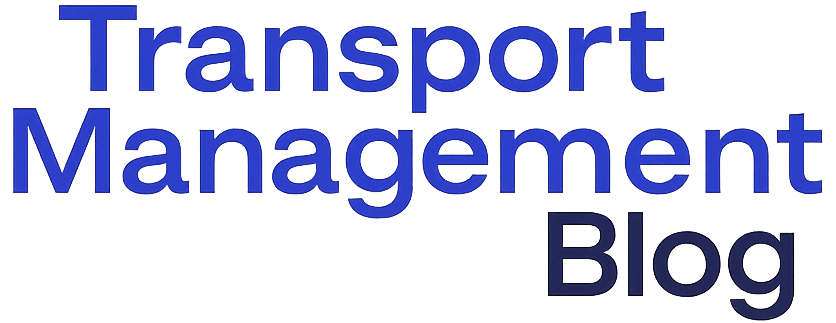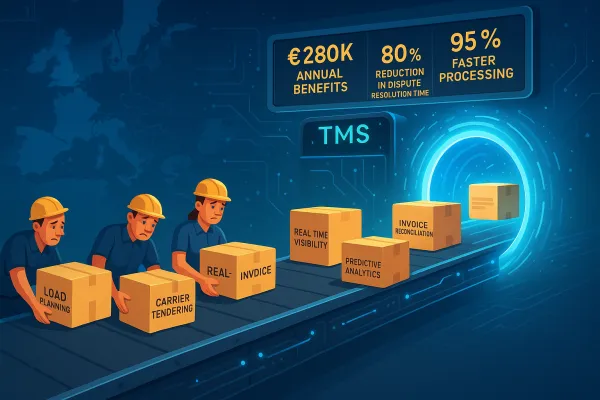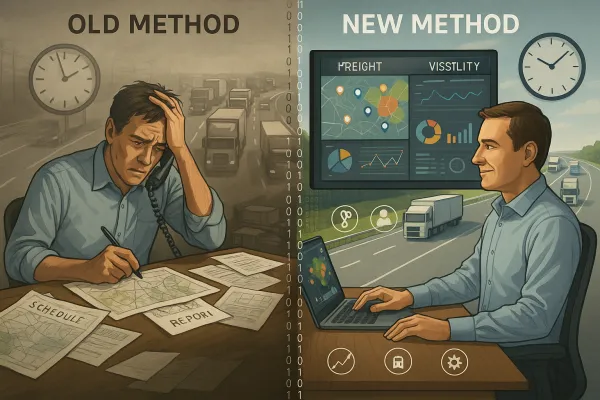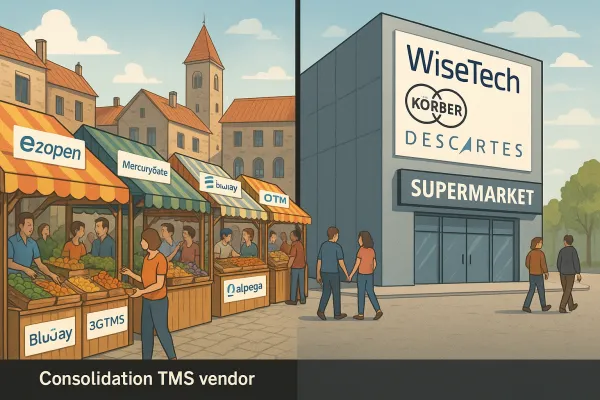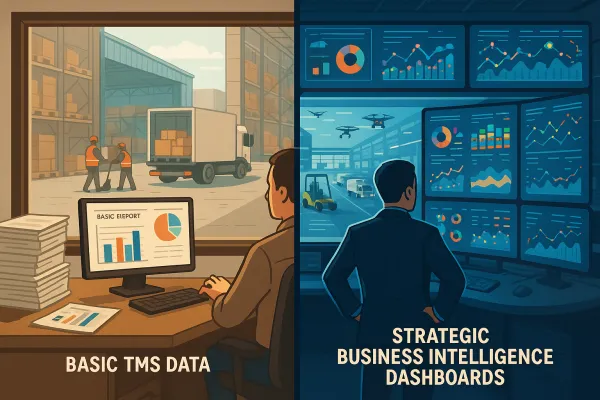CBAM Compliance and Beyond: How European Shippers Can Transform Sustainability Regulations into TMS-Powered Competitive Advantage
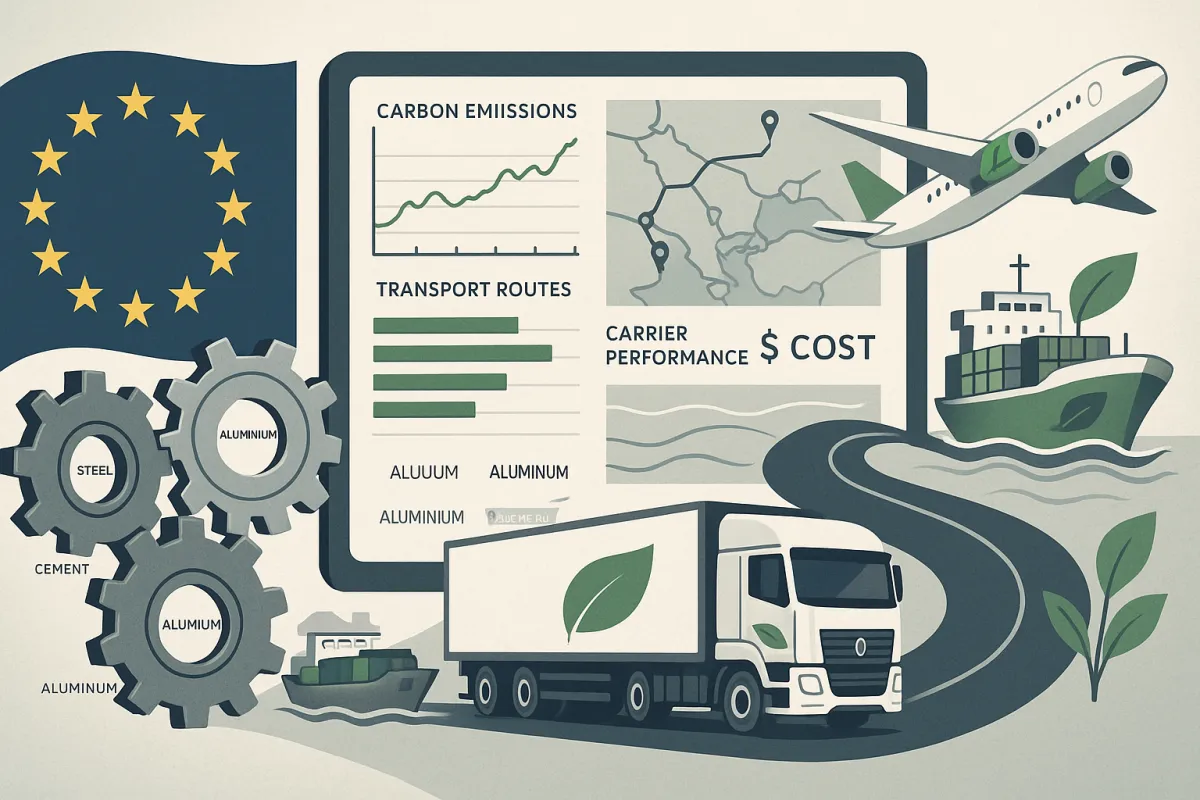
CBAM will apply in its definitive regime from 2026, with a transitional phase of 2023 to 2025. Yet most European manufacturers are treating this like another compliance checkbox instead of the strategic opportunity it represents. If your business imports more than €150 worth of these products, you will be in scope of CBAM, which means even smaller import operations need to pay attention.
Manufacturing operations manager Andreas Mueller from a mid-sized German automotive supplier put it bluntly during a recent industry conference: "We spent months figuring out quarterly CBAM reporting requirements, only to realize our transport management system could have been collecting this data automatically all along." His company now tracks embedded emissions across their entire supply chain, giving them negotiating power with both suppliers and customers.
The CBAM Reality Check: What European Shippers Must Prepare For
Importers and indirect customs representatives can apply for the status of authorised CBAM declarant to be able to import CBAM goods from 1 January 2026. This isn't optional paperwork. As of 1 January 2026, only registered declarants will be allowed to import CBAM goods.
CBAM covers high-emitting commodities including electric energy production, cement, aluminum, fertilizers, iron, steel and hydrogen, plus certain precursor materials. For manufacturers importing steel components, aluminum parts, or cement for construction operations, this directly impacts your transport procurement decisions starting now.
Understanding CBAM's Transport Impact on Supply Chains
The regulation goes deeper than direct imports. During this period, importers must determine and document direct and indirect emissions that occur in the course of production, with quarterly CBAM reports providing information on imported quantity of CBAM goods and embedded emissions. Your transport choices - modal selection, route optimization, carrier performance - all contribute to these embedded emissions calculations.
The de minimis rule exempts imports up to €150 from CBAM while VDMA representatives campaign to raise that to €5000. This threshold affects procurement strategies, encouraging consolidation or potentially splitting shipments depending on your carbon optimization goals.
Why Traditional Sustainability Approaches Fall Short
Necessary IT solutions for recording and determining carbon dioxide equivalent (CO2e) emissions are often lacking. Most companies rely on spreadsheets and manual calculations that can't handle CBAM's quarterly reporting requirements, let alone optimize transport decisions based on carbon intensity.
The required data are often not available, either because suppliers do not collect them in the first place, or are not willing to hand them over. Additionally, every importer can be held accountable for the data they collect from their suppliers, but often lack the resources to control them all. Manual tracking systems compound this challenge.
Transport procurement teams face a particular problem. Traditional RFP processes focus on cost and transit time, occasionally adding basic sustainability metrics as an afterthought. During the transition period, importers will face fines for not declaring emissions or for under-declaring emissions, with exact fines between €10-50 per tonne of carbon dioxide equivalent not declared. These penalties make accurate emissions tracking a financial imperative, not just a compliance exercise.
The TMS-Powered CBAM Compliance Strategy
Advanced transport management systems can automate CBAM data collection while simultaneously optimizing transport decisions for both cost and carbon performance. The key is selecting platforms that integrate emissions tracking with procurement workflows.
Automated Emissions Data Collection and Supplier Integration
Modern TMS platforms like Cargoson, MercuryGate, and Descartes now offer built-in carbon calculators that provide pre-calculated CO2 emission estimation before making transport booking. This shifts carbon consideration from post-hoc reporting to proactive decision-making.
A new portal section of the CBAM Registry allows installation operators outside the EU to upload and share their installations and emissions data with reporting declarants in a streamlined manner. Advanced TMS platforms can integrate with this registry through APIs, automatically pulling verified emissions data from suppliers and embedding it into transport planning workflows.
Look for systems that offer real-time carrier emissions data integration. Some platforms now connect directly with logistics providers' sustainability reporting systems, eliminating manual data collection and reducing the risk of under-reporting penalties.
Carbon-Optimized Transport Decision Making
The real advantage comes from systems that optimize transport decisions based on multiple variables including carbon intensity. Instead of selecting carriers based solely on cost and speed, TMS platforms can now factor in emissions performance, helping you minimize both CBAM certificate requirements and overall transport costs.
TMS reduces manual errors and optimizes operations, leading to significant reductions in fuel consumption and carbon emissions. Key functionalities such as route optimization and load consolidation allow businesses to plan the most efficient transportation routes. This optimization directly reduces your CBAM compliance costs by lowering the embedded emissions in your imports.
Beyond Compliance: Turning CBAM into Competitive Advantage
Forward-thinking supply chain directors aren't just preparing for CBAM compliance - they're using it as a catalyst for competitive differentiation. Companies who do not innovate to reduce their embedded emissions will face an additional cost for production of their goods. Where a company innovates to reduce their embedded emissions, they may be eligible to claim a price premium for their goods.
Strategic Sourcing for Low-Carbon Supply Chains
TMS platforms enable you to evaluate total cost of ownership including carbon pricing. When comparing suppliers, you can now factor in their carbon intensity alongside traditional metrics. A supplier offering slightly higher product costs but significantly lower embedded emissions might deliver better total value once CBAM costs are included.
Some manufacturers are using this analysis to drive nearshoring decisions. A Czech automotive parts manufacturer recently moved aluminum sourcing from China to Norway specifically because Norwegian aluminum's hydroelectric production significantly reduces CBAM exposure compared to coal-powered Chinese alternatives.
Market Differentiation Through Verified Sustainability
Advanced TMS platforms offer customer-facing sustainability reporting capabilities. You can provide verified carbon footprint data for specific shipments, enabling your customers to make informed purchasing decisions and demonstrate their own sustainability progress.
CBAM solutions automate the entire compliance process from supplier data collection to regular emissions reporting, collecting embedded emissions data from in-scope suppliers and calculating financial exposure based on EU-ETS pricing. This automated approach gives you credible data for both compliance and competitive positioning.
Implementation Roadmap: From CBAM Panic to Strategic Advantage
Most companies are approaching this backwards, focusing on compliance systems instead of strategic integration. Start with transport optimization that happens to enable compliance, not compliance systems that might eventually optimize transport.
Phase 1: Foundation Building (Q4 2025)
Begin TMS platform evaluation now. From early 2025, CBAM declarants can apply for the 'authorised CBAM declarant' status via the CBAM Registry, processed by the National Competent Authority of the EU Member State where they are established. Your TMS should be operational before you submit this application.
Evaluate platforms including Cargoson, Oracle Transportation Management, SAP Transportation Management, and specialized solutions like IntegrityNext that focus specifically on CBAM compliance. Look for systems offering automated supplier integration, real-time emissions calculation, and API connectivity with the CBAM Registry.
Establish baseline carbon footprints for your current transport operations. This gives you benchmark data to measure improvement and identify the highest-impact optimization opportunities.
Phase 2: Operational Integration (Q1-Q2 2026)
From 1 January 2026 the CBAM will mandatorily require independent verification of CBAM reports. Your TMS should automatically generate audit-ready documentation, not require manual compilation for verification.
Implement carbon-optimized procurement processes within your existing workflows. Your transport buyers should see emissions impact alongside cost and transit time for every transport decision. This doesn't require process overhaul - just enhanced decision-making data.
Set up automated performance monitoring comparing your carbon intensity improvements against CBAM certificate costs. Track both absolute emissions reductions and financial impact on your import operations.
The Strategic Advantage of Early Action
Companies implementing TMS-powered sustainability strategies before CBAM enforcement gain multiple advantages. They develop carbon-optimized supplier relationships while competitors are still figuring out reporting requirements. They establish market position as sustainability leaders before this becomes table stakes.
TMS facilitates real-time data collection and analysis, empowering businesses to monitor their environmental impact and make informed decisions. The integration of advanced technologies like artificial intelligence and machine learning within TMS enhances its capability to support eco-friendly practices, ultimately contributing to a greener supply chain while also driving cost savings.
More importantly, they transform regulatory compliance from cost center to profit center. While competitors pay CBAM penalties and compliance costs, early adopters optimize both transport spend and carbon performance, often reducing total costs despite sustainability investments.
The question isn't whether CBAM will impact your transport operations - it's whether you'll use this disruption to gain competitive advantage or just scramble to comply. The TMS platform you choose today determines which category you'll be in when CBAM enforcement begins.
